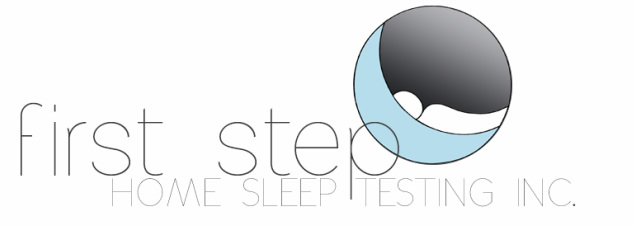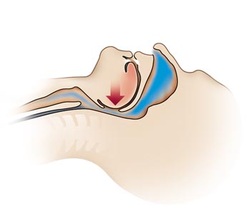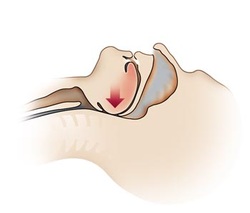Sleep Disordered Breathing (SDB)
Sleep Disordered Breathing is a broad term for chronic conditions which consist of repeated episodes of respiratory disturbances during sleep. SDB disrupts the patient’s sleep pattern, night after night, which not only causes the sufferer to be tired and exhausted the next day, and also puts stress on the nervous system and major organs. This can happen more than 120 times every hour, even though you may not remember waking up. A sleep study is the only way to determine if a person has a sleep disorder.
There are three main types of Sleep Disordered Breathing as manifested in Sleep Apnea. All of the different forms are outlined below.
There are three main types of Sleep Disordered Breathing as manifested in Sleep Apnea. All of the different forms are outlined below.
Sleep Apnea is a disorder that causes your body to stop breathing while you sleep. It’s a potentially fatal condition, with harmful
short and long term complications, that affects more than 1 in 3 men and 1 in 6 women.
When we sleep, Our body is able to heal, restore and rejuvenate. Adequate, quality sleep in which we reach a deep sleep, is essential to keep our bodies running properly. That's why when our sleep gets continually interrupted, it can cause serious stress to our bodies and all around well being. On going, or chronic sleep derivation is linked to an increased risk of kidney disease, heart disease, stroke, diabetes, and high blood pressure.
short and long term complications, that affects more than 1 in 3 men and 1 in 6 women.
When we sleep, Our body is able to heal, restore and rejuvenate. Adequate, quality sleep in which we reach a deep sleep, is essential to keep our bodies running properly. That's why when our sleep gets continually interrupted, it can cause serious stress to our bodies and all around well being. On going, or chronic sleep derivation is linked to an increased risk of kidney disease, heart disease, stroke, diabetes, and high blood pressure.
Symptoms of Sleep Apnea
One of the most recognizable symptoms of respiratory sleep disorders is snoring, even though many people ignore this sign or fail to recognize it as a symptom of a more serious condition. The absence of snoring does not discount the presence of an Sleep Apnea. Often suffers of Central Sleep Apnea do not snore.
- Snoring, interrupted by pausing in breathing
- Nocturnal choking/Gasping/Coughing
- Restless sleep
- Excessive sleepiness or fatigue during the day
- Neck size over 17" in men or 16" in women
- Crowded airway
- Night sweats
- Fatigue
- High fasting blood sugar levels
- Morning headaches
- Sexual dysfunction
- Frequent urination at night
- Poor judgement or concentration
- Forgetfulness
- Memory loss
- High blood pressure
- Depression/Moodiness/Irritability
- Obesity
Obstructed Sleep Apnea (OSA)
Obstructive sleep apnea (OSA) is the most common type of Sleep Apnea and is caused by complete or partial obstructions of the upper airway. It is characterized by repetitive episodes of shallow or paused breathing during sleep, despite the effort to breathe, and is usually associated with a reduction in blood oxygen saturation. These episodes of decreased breathing, called "apneas", typically last 20 to 40 seconds.
|
|
4 in 100 middle-aged men and 2 in 100 middle-aged women have OSA. Sleep-disordered breathing also affects up to 3% of children Most OSA sufferers remain undiagnosed and untreated OSA is as common as adult Asthma |
Central Sleep Apnea (CSA)
Central Sleep Apnea, a less common form of SDB, is distinguished by a series of episodes where there is no struggle to breathe. The brain does not receive the proper breathing signals which puts stress on the body. CSA and OSA result in repetitive events of insufficient air flow, oxygen absorption, and carbon dioxide exhalation. Unlike OSA, if you were to see someone with a Central Apnea, you would see no visible effort, with no gasp or snort, so it makes it much less obvious to diagnose. This is why a sleep study is especially needed.
Also worth noting is; Cheyne-Stokes Respiration (CSR), another form of apnea. This kind of disorder is characterized by recurrent central apneas during sleep alternating with a crescendo-decrescendo pattern of respiratory rates. With cycles of respiration that are increasingly deeper then shallower and also with possible periods of a complete apnea (pause it breath).
Also worth noting is; Cheyne-Stokes Respiration (CSR), another form of apnea. This kind of disorder is characterized by recurrent central apneas during sleep alternating with a crescendo-decrescendo pattern of respiratory rates. With cycles of respiration that are increasingly deeper then shallower and also with possible periods of a complete apnea (pause it breath).
Treatment and the effects of SDB if left untreated
Treatment for these disorders is the most effective and reliable means of treating Sleep Apnea. One of the treatments, is use of a CPAP machine. Simply by applying pressurized air to the airway to keep it open can give the body what it needs to have a restful night. This pressure is delivered using an electric blower called a CPAP, connected to a mask to be worn during sleep.
If left untreated Sleep Disorders can lead to serious health risks and dysfunctions which can include:
If left untreated Sleep Disorders can lead to serious health risks and dysfunctions which can include:
- Heart Diseases/Heart Attack
- Stroke
- Kidney Disease
- Fatigue related motor vehicle & work accidents
- Diabetes
- Decreased quality of life
- High Blood Pressure
- Frequent Medical Care
media courtesy of ResMed firSTep does not claim ownership


